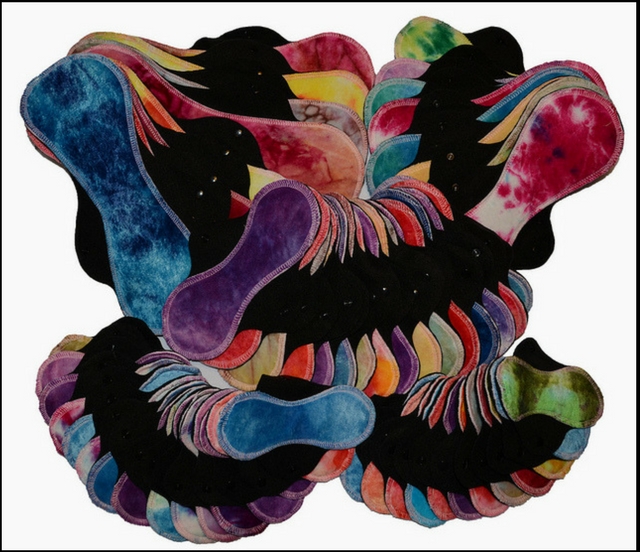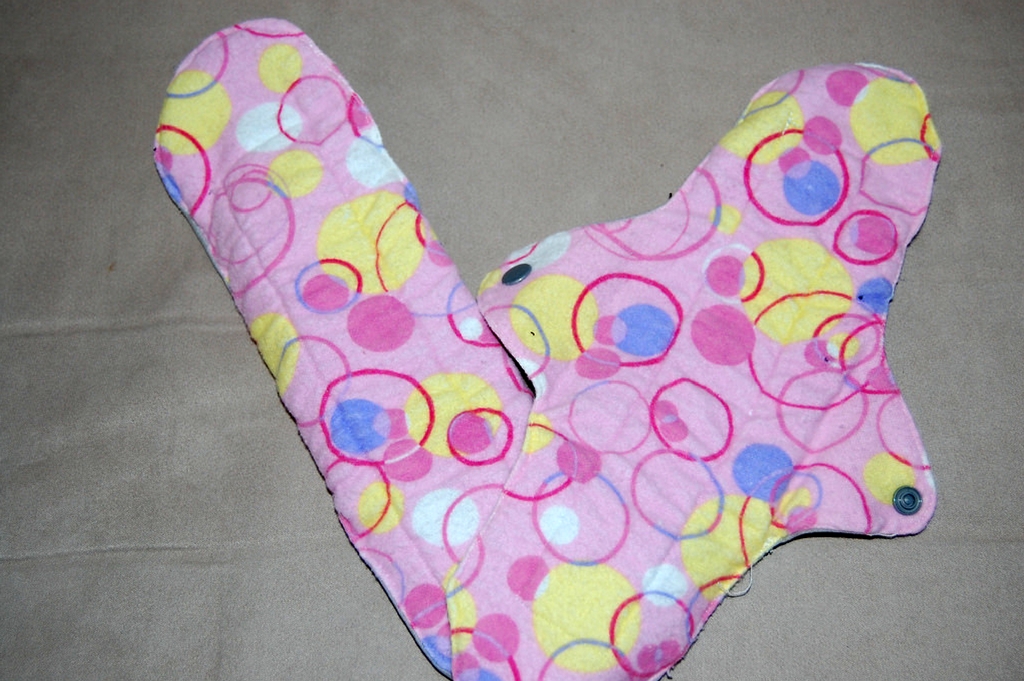The amount of sanitary waste that is generated every year in India remains largely unknown because there are no reliable statistics on the subject.
Though the menstrual revolution brought relief to millions of women in India in the late nineties, the fact that this accessibility, that was owed to mass production of disposable sanitary napkins, came at the cost of clogged sewers and polluted environments.
Made of plastic, most of these non-compostable pads post-use find their way into landfills or worse, water bodies, since no dedicated waste management or incineration units for sanitary waste exist in our country.
With more awareness about the environmental damage caused by sanitary waste rising among people, many women are switching back to a practice followed by our grandmothers or mothers in the olden days,
Homemade cloth pads!

Though a lot of organisations and small companies across the country have started manufacturing eco-friendly and cloth based pads that are reusable, anyone can make these at home, if you have an inclination towards Do-It-Yourself (DIY) activities!
Some of the basic materials that you would require for the task are as follows:
- A disposable pad for reference (this can be according to your preference)
- Flannel cloth (make sure the flannel is made of 100% cotton for best use)
- An old towel
- A sewing Machine
- Snaps or Tic-Toc buttons
Here are the simple steps through which you can make your very own eco-friendly menstrual pads:
1. To make the outer body of the pad, you need to trace the disposable pad on the flannel cloth and cut out two pieces.
2. Make sure you add more length to the wings in the flannel since the commercial pads are meant to be stuck on your underwear while the wings on these overlap each other through fastenings.
3. Next is what goes inside the pad. Take an old towel that is still usable and cut out some rectangular shapes with curved edges.
4. These need to an inch shorter than the flannel cutouts. Place the towel liner centred between these. You can place more than one based upon your preference.
5. You can keep the layers in place using a pin or more in case you’re worried about the shifting.
6. Now starts the stitching work. You can either hand sew the pads or use a sewing machine. Either way, stitch two channels in the centre to fasten the towel to both the flannel pieces.
In collaboration with Aakar Innovations, The Better India is setting up a sanitary pad manufacturing unit in Ajmer, Rajasthan, that will not only produce eco-friendly or biodegradable sanitary pads, but will also employ women from rural communities around the area.
Contribute for the campaign here.
Unable to view the above button? Click here
7. Next stitch carefully all around your pad sticking as close to the edge as you can, and again backstitching at the beginning and end. Make sure you align and pinch the layers so that they stay put as you work around.
8. In case of any excess fabric edging out of the outer stitch, you can snip it out using scissors. But do be careful, lest you shear off the stitches.
9. Now you need to fix the snaps or tic-toc buttons on the wings that will keep the pad in place.
10. Make sure you place the male snap/button on the upper side of one wing and the female snap on the lower side of the other wing.
That’s it! Your pad is ready for use!
Talking about the wash and care, this is where many of us recoil at the very idea of reusable menstrual pads and dealing with our own blood. But just the way it took time for accepting the menstrual cycle as an unavoidable aspect during your initial days of puberty, you can get used to these too.
You need to wash the pads right away after use preferably with cold water. Also, make sure you wring it really well. Unlike the commercial pads, these pads do not smell and can last really long. Not only are the materials environmental friendly, they are comfortable and cheap too.
In collaboration with Aakar Innovations, The Better India is setting up a sanitary pad manufacturing unit in Ajmer, Rajasthan, that will not only produce eco-friendly or biodegradable sanitary pads, but will also employ women from rural communities around the area.
Contribute for the campaign here.
Unable to view the above button? Click here
One needs to keep in mind is that these pads would never equal to the endurance capacity that a synthetically processed pad has.
However, being cloth based, there is little chance of rashes or hygiene issues that are often faced by women using disposable pads.
So go ahead and try your hand at making an eco-friendly homemade menstrual pads!
Like this story? Or have something to share?
Write to us: contact@thebetterindia.com
Connect with us on Facebook and Twitter.
NEW: Click here to get positive news on WhatsApp!
If you found our stories insightful, informative, or even just enjoyable, we invite you to consider making a voluntary payment to support the work we do at The Better India. Your contribution helps us continue producing quality content that educates, inspires, and drives positive change.
Choose one of the payment options below for your contribution-
By paying for the stories you value, you directly contribute to sustaining our efforts focused on making a difference in the world. Together, let's ensure that impactful stories continue to be told and shared, enriching lives and communities alike.
Thank you for your support. Here are some frequently asked questions you might find helpful to know why you are contributing?

